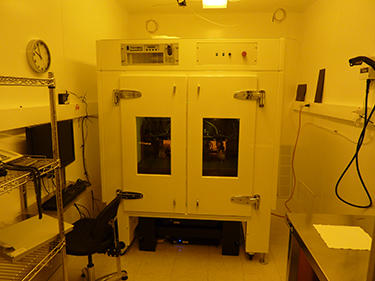Summary
The project focuses on significant metrology challenges that impede the advancement of high-performance optical and photonic systems. We develop, fabricate, and characterize innovative nano-structured optics with diffractive and sub-wavelength features for advanced imaging applications and surface metrology. The project also develops new interferometric methods for shape, or form, measurements of ultra-precise optical surfaces and wavefronts using advanced holograms.
Description

Ultra-precise optics are essential to innovations in many high-tech areas, such as scientific imaging applications ranging from microscopy to astronomy, semiconductor manufacturing, medical imaging technology, defense, homeland security, consumer products, communication and information technology. Advanced optical elements incorporate features that yield vastly improved performance but pose significant new measurement challenges. Examples are complex surfaces that are neither flat nor spherical, diffractive optics with micro- and nano-scale surface structures, extreme accuracies, special materials and coatings, and adaptive technologies. The development and manufacture of these advanced features depend strongly on advances in traceable metrology for optical figure and wavefront. In many high-impact applications, the required form accuracies are at the (sub-) nanometer level. No general, widely-recognized, validated way exists to characterize complex and nano-structured optical surfaces, and the application range and uncertainty of existing methods are not well understood. The project addresses the metrology needs of U.S. Industry and Science for the manufacture and application of innovative optical elements and systems, and ultra-precise surfaces.
Major Accomplishments
- Developed the first prototype of a new metrology system to characterize flaws and fabrication errors in diffractive optics. The system analyzes the light reflected (or transmitted) by a grating at the focal plane of a lens with a high dynamic range camera. We have identified fabrication errors in gratings that could not be found with either microscopy or interferometry.
- Successful performance characterization of the slitless spectrometer for the Wide Field Infrared Survey Telescope (WFIRST) at infrared wavelengths. Currently the top-ranked large science mission of NASA, The WFIRST Telescope, scheduled to launch in mid-2020, is a space observatory designed to perform wide field imaging and surveys of the near infrared (NIR) sky. WFIRST is the first space science mission dedicated to determining the distribution and evolution of dark energy and dark matter in the universe.
- Created and delivered to NASA a prototype diffractive lens of a type that might be used on the Mars Organic Molecule Analyzer (MOMA), an instrument on the rover of the forthcoming ExoMars mission (2017-2022). The lens creates a laser beam with a top-hat intensity profile for uniform heating of rock and soil samples. Demonstrated to NASA that we can make diffractive optics that are not commercially available. Became the foundation for continued collaboration.
- Developed photon sieves for applications in surface metrology. Originally invented for x-ray optics, photon sieves eliminate higher diffraction orders by dispersing the light into a wide angular range. The result is reduced measurement uncertainty for complex surface form measurements, because high diffraction orders often cause coherent stray light.
- Improved the uncertainty for measurements of the sphericity of ultra-precise reference spheres by almost an order of magnitude with a new calibration method based on lateral shearing measurements. (NIST Bronze Award)
Technical Goals:
- Disseminate the SI standard of length for the form metrology of precision surfaces and wavefronts through the development of innovative interferometric metrology methods and calibrations.
- Promote metrology for aspheric and free-form surfaces, and for nano-structured optics, that is traceable to the SI through test wavefronts with known uncertainty.
- Research and develop innovative optics that incorporate nano-structured diffractive and sub-wavelength features for metrology and imaging applications.

